How Melbourne’s city lanes and streets got their names
BRITISH bigshots, a banker who went belly-up, a brave explorer, some bush beauty and a brace of brothels. What inspired early Melbourne’s street names?
VIC News
Don't miss out on the headlines from VIC News. Followed categories will be added to My News.
COLONIAL heroes weren’t the only inspirations for the names of early Melbourne’s streets.
Lord Mayor Robert Doyle says there’s plenty of colour in the names given to the city’s thoroughfares — and even a little sex and sin was thrown in.
ARE THESE VICTORIA’S FUNNIEST STREET NAMES?
Surveyor Robert Hoddle laid out Melbourne’s central grid, but the names of the streets he planned and the paths beaten by the locals between them reveal a lot about Melbourne’s history.
The names of the east-west streets are straightforward.
La Trobe Street was named after Charles La Trobe, the Port Phillip District’s first Superintendent and, after separation from NSW, Victoria’s first Governor.
Captain William Lonsdale was Port Phillip’s Police Magistrate and a leading civil servant.
NSW Governor Richard Bourke (1831-38) visited Melbourne in 1837, the year Hoddle laid out the original grid, and named Melbourne and its major streets.
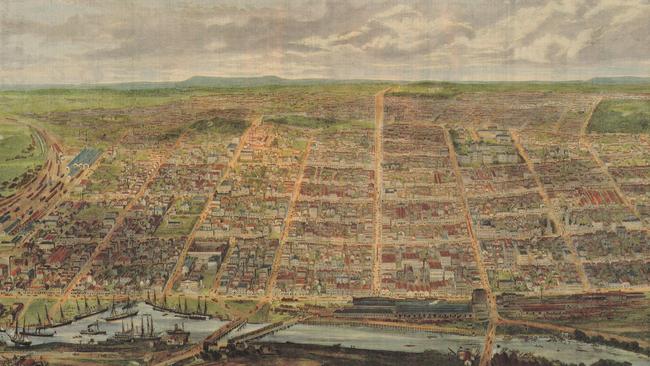
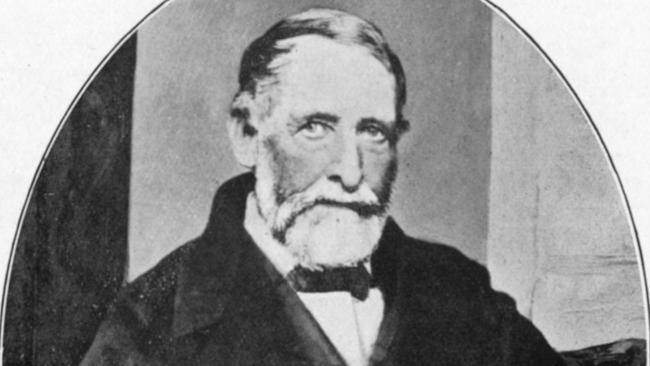
Collins Street was named for David Collins, who in 1803 led the establishment of Port Phillip’s first settlement, a penal colony near present-day Sorrento.
Poor positioning and a lack of water led him to abandon the settlement in a matter of months and head for Van Diemen’s Land, where he established Hobart.
The explorer Matthew Flinders gives his name to the southernmost street in the grid.
Things get interesting, though, when you consider what’s behind the names of the north-south streets and the narrow byways within the grid.
In the west, Spencer Street was named for Earl John Charles Spencer, the leader of Britain’s House of Lords in the 1830s and a former Chancellor of the Exchequer to Prime Minister of the day, Lord Melbourne.
At the top end of town, the Royal Historical Society of Victoria suggests two theories about how Spring Street was named.
It says it could be a tribute to another Chancellor of the Exchequer, Thomas Spring-Rice, but Mr Doyle favours the second theory.
“I think it really was this quite Victorian focus on nature and naturalism,” Mr Doyle said.
“It would have been at the top of the city, at the top of the hill, and there would have been wattle trees and lemon-scented gums, and I think it really was just a tribute to what the Victorians would have called the vernal season — and that actually comes from testimony from Robert Hoddle.”
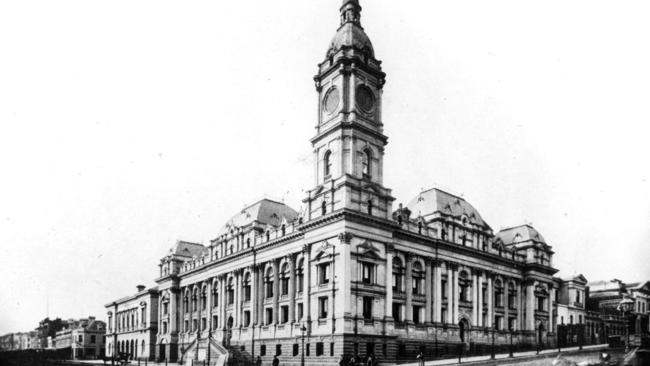
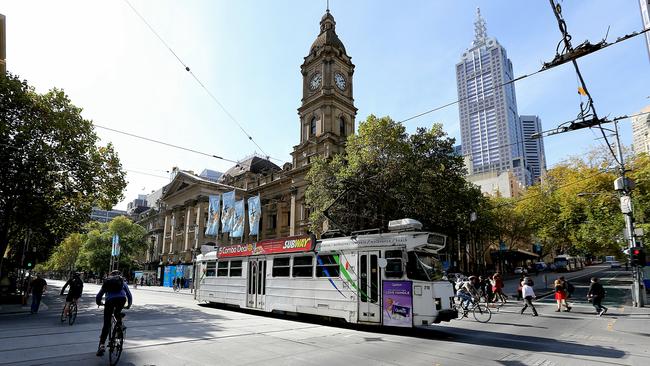
Exhibition Street was named in 1880 for the Great Exhibition at the then brand spanking new Royal Exhibition Building, just up the road.
Earlier, it was Stephen Street, named after Colonial Under-Secretary Sir James Stephen, who was serving when Melbourne was settled and who greatly supported colonising Australia.
“I don’t think anybody remembers James Stephen, but the Exhibition Building is still there and they’re a vital part of Melbourne,” Mr Doyle said.
Lord John Russell, British Secretary of State from 1835 to 1841 and a future PM, was the inspiration for Russell Street’s name.
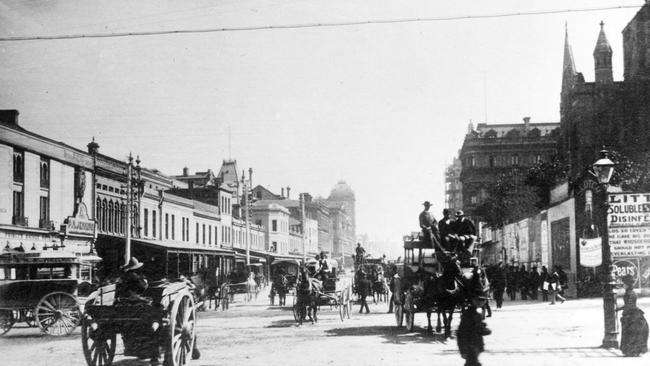
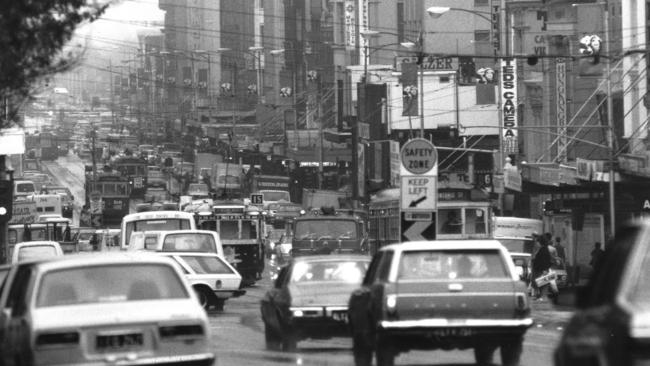
Swanston Street was named after Captain Charles Swanston, founder of the Derwent Bank in Hobart and the financial backer of the Port Phillip Association, a group from Van Diemen’s Land that was determined to settle present-day Victoria.
As a soldier, he was part of an expedition that overthrew the government of Mauritius, was wounded three times while commanding 1000 troops in battle in India and served as a military paymaster before taking a year’s leave in Van Diemen’s Land because of ill health, where he helped to establish the Derwent Bank.
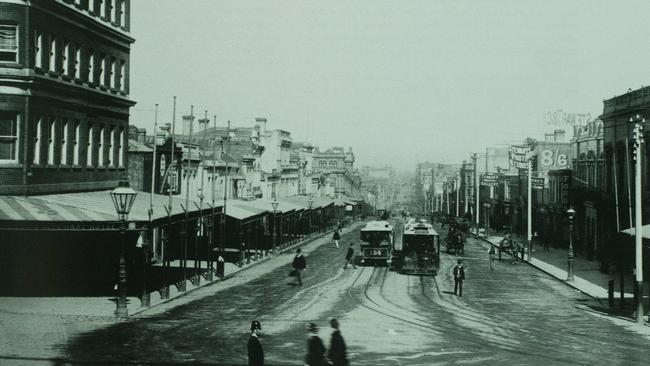
Swanston helped to finance the establishment of Melbourne/
He converted the Derwent Bank into a mortgage bank, which collapsed amid the depression of the 1840s.
He was bankrupted, but he had left a mark on the global banking system that remains today.
“In Australia, he invented a banking system called the overdraft,” Mr Doyle said.
“In England, it was illegal. If people gave out promissory notes or cheques for more money that they had on hand, and the bank refused to honour them, they went to jail.“
Swanston remained a grazier and merchant with interests in the Geelong region, and died on a voyage back to Australia from California in 1850.
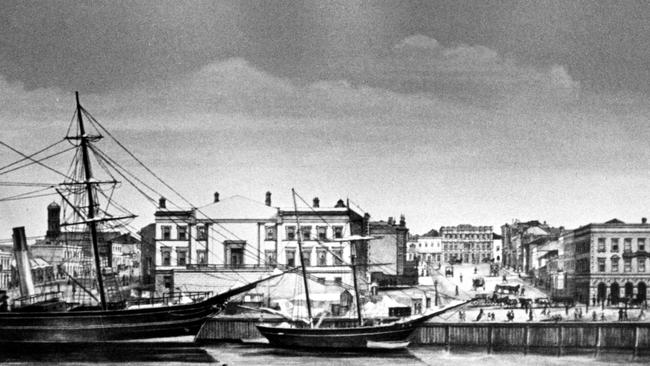
Mr Doyle disagrees with the Royal Historical Society’s explanation of the origin of King, William, Queen and Elizabeth streets.
The Royal Historical Society contends that King Street was named for former NSW Governor Phillip Gidley King, under whom Collins’ convict settlement was established, while William and Queen streets honoured the reigning monarch, King William IV and his wife, Queen Adelaide. Some supported naming Queen Street as Adelaide Street, the society says.
Although the origin is not entirely clear, the historic society suggests Elizabeth Street was probably named after Governor Bourke’s wife.
Bourke Street and Elizabeth Street meet at the centre of the Hoddle Grid.

Mr Doyle said he believes that local animosity towards NSW at the time meant that it was unlikely King street was named after the governor, and that the name of Elizabeth Street introduces an alternate theory, with King and William and Queen and Elizabeth named as a matching pair.
“My theory has always been — and this is how I remembered them as a child — King, William, Queen, Elizabeth was for King William IV, who was the monarch of the time, and Queen Elizabeth I, who was held in reverence,” he said.
Within the grid, many lanes and alleys were named after local merchants, businesses or hotels.
Zevenboom Lane, off Little Lonsdale Street and near Elizabeth Street, was named for Dutchman John Zevenboom, who operated the first brush-making firm in the southern hemisphere.
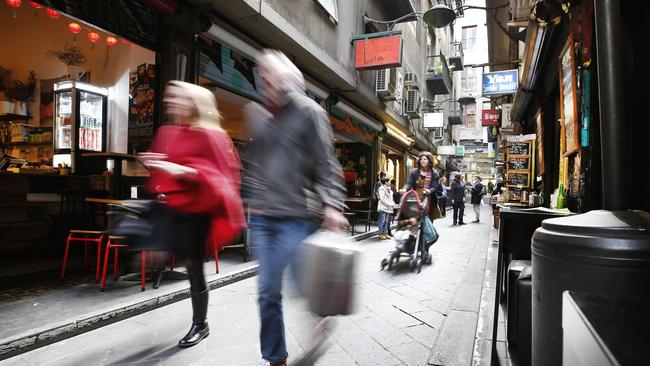
John Degraves, a merchant and pastoralist, ran a steam-powered flour mill in Degraves Street.
Rainbow Alley, named for the Rainbow Hotel, is one Mr Doyle said always piqued his interest.
“I thought it would be lovely and romantic,” he laughed.
“It was the name of a pub, but it was one of the most noxious areas of all of Melbourne.
“There was an oyster shop there that used to leave its leavings out the back, and the City of Melbourne had — and I’ve got to bring this back again — an Inspector of Nuisances, and the inspector.
“He was one Richard Bullens, and do you know what he found down there?
“He found that this was one of the right-of-ways commonly used at night as ‘a place of convenience’.”
Liverpool and Crossley streets, which link Bourke and Little Lonsdale streets between Exhibition and Spring streets, also had a decidedly seedy past.

The east end Little Lon, as it was known, was once the darkest part of Melbourne’s underbelly.
Crossley and Liverpool were known as Juliet Terrace and Romeo Lane respectively.
Officially, this was linked to the nearby Shakespeare Hotel, but Mr Doyle said this was anything but a tribute to the great playwright.
“You know why they were called that? Because they were the streets of brothels, and if you wanted a male prostitute you went to Romeo Lane, and if you wanted a female prostitute, you went to Juliet Terrace,” he said.
Mr Doyle said this part of town is linked to one of early Melbourne’s greatest scandals — the disappearance of the Victorian Parliament’s first mace.
“One of the great urban myths, and I don’t know if it’s true or not, is that the members of parliament took the mace down the hill from Spring Street and it was left in one of the brothels in Romeo or Juliet street,” he said.
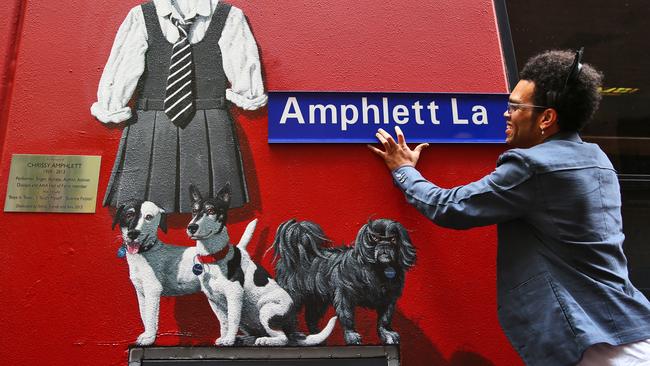
As the Exhibition Street example shows, the City of Melbourne doesn’t shy away from name changes.
Divinyls lead singer Chrissy Amphlett and rockers AC/DC have made to our city.
Mr Doyle said he has personal reasons for his favourite Melbourne street name.
“I think Bennetts Lane is probably the best named laneway in Melbourne, isn’t it? The famous jazz lane?” he said.
“It was named after my great, great grandfather (Robert Bennett). He was mayor here in 1861.”
The Royal Historical Society of Victoria has a handy guide to central Melbourne’s street names.


